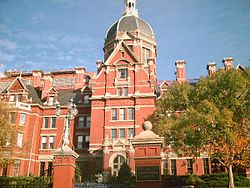
Myasthenia Gravis (MG) means severe muscular weakness and that is exactly what patients experience. We know now that this neurologic disease is due to an autoimmune process in which patients develop antibodies which disrupt activation of muscles. These antibodies accomplish this by attacking the receptor side of the synapse linking the nerves bringing a signal to the nerve carrying the message to the muscle. The neurotransmitter acetylcholine is still released normally by the first nerve but an insufficient amount is allowed to trigger receptors and the resultant muscular action is weakened. Why the body turns traitor and attacks itself is unknown. My explanation is quite simplified. More detailed explanations can easily be found on the web.
In retrospect we believe cases of MG were encountered in the late 19th century. Treatment with drugs to retard the body’s normal degradation of acetylcholine was introduced in the 1930s and remains the mainstay of medical treatment; Mestinon is the mainstay.
The likely participation of the thymus gland in MG was born from the observation early in the 20th century that many patients had abnormalities of this organ. In 1917 a surgeon removed the thymus to treat thyrotoxicosis in a series of patients and was surprised that he also cured MG in a patient. in 1939 Blalock, more noted for his contributions to cardiac surgery, removed a MG patient’s thymus because of a thymoma and her symptoms improved. Encouraged, in 1941 he began to perform thymectomies in MG patients with normal appearing glands and this began the era of surgery for (some) patients with MG.
The operation can be performed through a sternotomy, the neck, or using various minimally invasive techniques. Results are best if the operation is performed soon after diagnosis is made and if a the gland is removed; because it is buried in fat the surgeon may inadvertently leave a small fragment behind.



